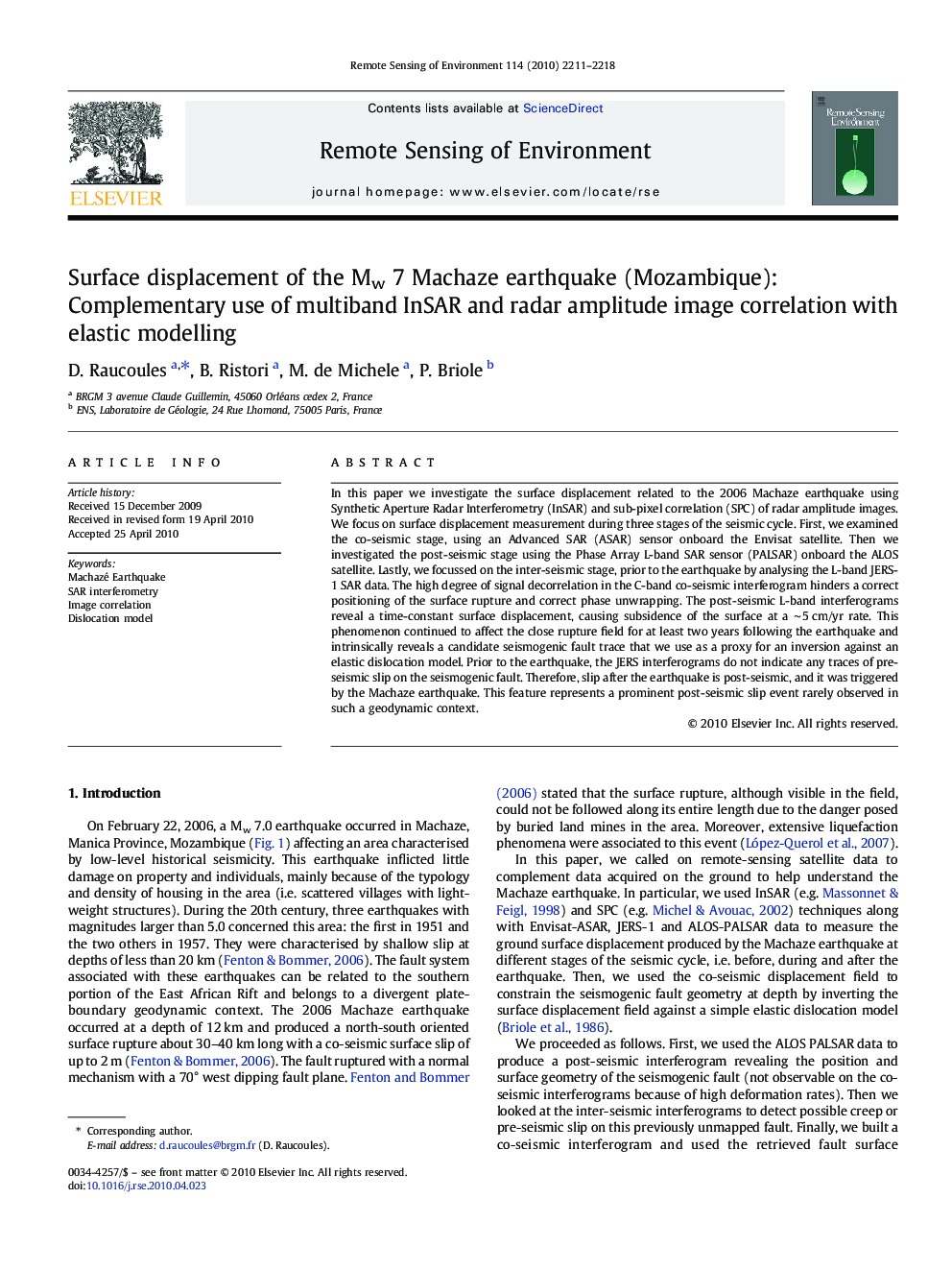| Article ID | Journal | Published Year | Pages | File Type |
|---|---|---|---|---|
| 4459612 | Remote Sensing of Environment | 2010 | 8 Pages |
In this paper we investigate the surface displacement related to the 2006 Machaze earthquake using Synthetic Aperture Radar Interferometry (InSAR) and sub-pixel correlation (SPC) of radar amplitude images. We focus on surface displacement measurement during three stages of the seismic cycle. First, we examined the co-seismic stage, using an Advanced SAR (ASAR) sensor onboard the Envisat satellite. Then we investigated the post-seismic stage using the Phase Array L-band SAR sensor (PALSAR) onboard the ALOS satellite. Lastly, we focussed on the inter-seismic stage, prior to the earthquake by analysing the L-band JERS-1 SAR data. The high degree of signal decorrelation in the C-band co-seismic interferogram hinders a correct positioning of the surface rupture and correct phase unwrapping. The post-seismic L-band interferograms reveal a time-constant surface displacement, causing subsidence of the surface at a ∼ 5 cm/yr rate. This phenomenon continued to affect the close rupture field for at least two years following the earthquake and intrinsically reveals a candidate seismogenic fault trace that we use as a proxy for an inversion against an elastic dislocation model. Prior to the earthquake, the JERS interferograms do not indicate any traces of pre-seismic slip on the seismogenic fault. Therefore, slip after the earthquake is post-seismic, and it was triggered by the Machaze earthquake. This feature represents a prominent post-seismic slip event rarely observed in such a geodynamic context.
